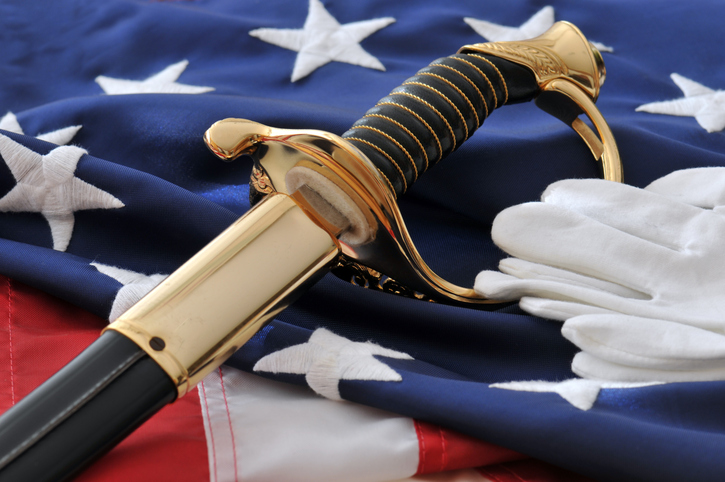The sword is said to be the emblem of military honor and should incite the bearer to a just and generous pursuit of honor and virtue. It is symbolic of liberty and strength. In the middle Ages, the sword was often used as a symbol of the word of God. The names given to many swords in mythology, literature and history reflect the high prestige of the weapon and the wealth of the owner.
Swords are commonly worn as a ceremonial item in many military and naval services throughout the world. Occasions to wear swords include any event in dress uniforms where the rank-and-file carry arms: parades, reviews, tattoos and changes of command. They are also commonly worn for officers’ weddings, and when wearing dress uniforms to church — although they are rarely actually worn in the church itself.
The U.S. Army uses a single-bladed sabre as its ceremonial sword. The Naval service swords are double blades, which are no longer sharpened. Every U.S. Naval and Coast Guard officer at or above the rank of Lieutenant Commander is required to own a sword, which can be prescribed for any formal outdoor ceremonial occasion; they are normally worn for changes of command and parades.
In the U.S. Marine Corps, every officer must own a sword that is prescribed for formal parades and other ceremonies where dress uniforms are worn and the rank-and-file are under arms. On these occasions, depending on their billet, the USMC Model 1859 NCO Sword is the longest continuously issued edged weapon in the U.S. inventory. The Marine officer swords are of the Mameluke pattern that was adopted in 1825 in recognition of the
Marines’ key role in the capture of the Tripolitan city of Derna during the First Barbary War. Taken out of issue for approximately 20 years from 1855 until 1875, it was restored to service in the year of the Corps’ centennial and has remained in issue since.




